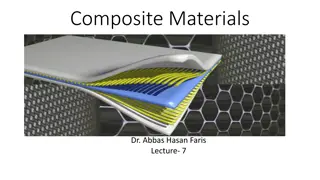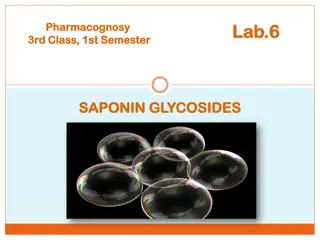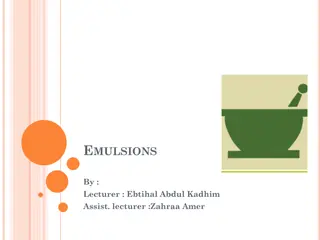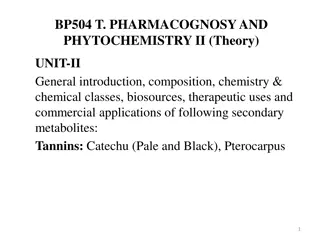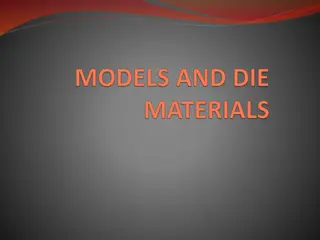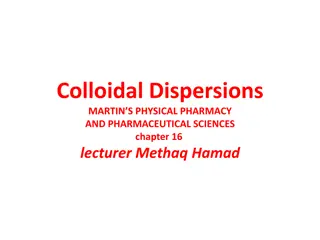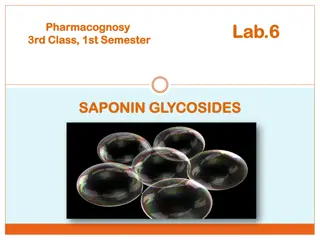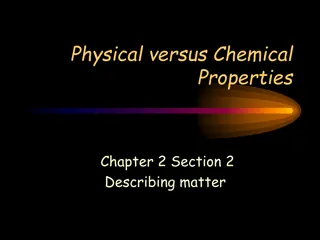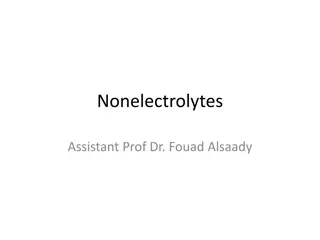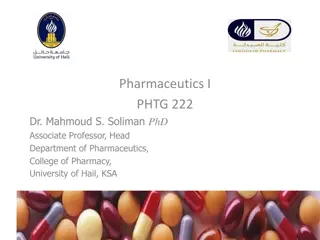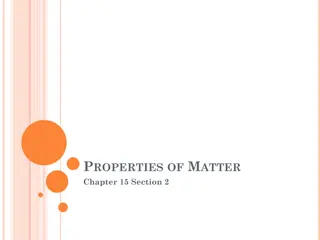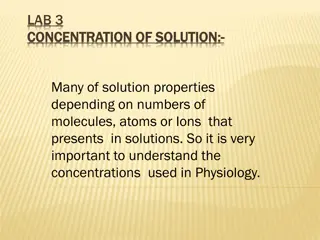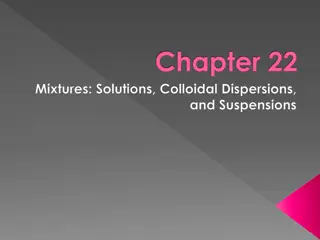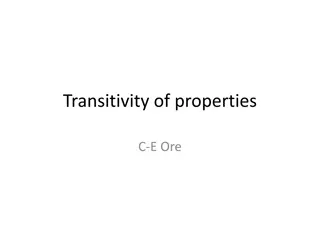Solutions and Colloidal Dispersions: Properties and Examples
Solutions and colloidal dispersions are mixtures essential in various processes, including food production. Understanding solubility, phases, and types of dispersions is crucial for food quality and stability. This content explores the properties of solutions, colloidal dispersions, and their existence in food products with practical examples.
Download Presentation

Please find below an Image/Link to download the presentation.
The content on the website is provided AS IS for your information and personal use only. It may not be sold, licensed, or shared on other websites without obtaining consent from the author.If you encounter any issues during the download, it is possible that the publisher has removed the file from their server.
You are allowed to download the files provided on this website for personal or commercial use, subject to the condition that they are used lawfully. All files are the property of their respective owners.
The content on the website is provided AS IS for your information and personal use only. It may not be sold, licensed, or shared on other websites without obtaining consent from the author.
E N D
Presentation Transcript
Solutions and Colloidal Dispersions Objectives Vocabulary Unsaturated Saturated Solubility Colloidal dispersions Aggregate Dispersed phase Continuous phase Emulsions Temporary emulsion Homogenization Osmosis Describes the properties of solutions Describe the properties of colloidal dispersions Identify and describe three types of colloidal dispersions Use examples to explain how solutions and colloidal dispersions exist as foods
Solutions Solutions: Crash Course Chemistry #27 (8:21) http://www.youtube.com/watch?v=9h2f1Bjr0p4 Solutions are homogenous mixtures of at least two substances, a solute that dissolves in a solvent. Solutes can be solids liquids and gases EX: salt Solvents can be solids liquids and gases but it is usually a liquid like water.
Solutions Saturated, Unsaturated, and Superstaurated Solutions (10:20) http://www.youtube.com/watch?v=QeNn3sY1bu4 Unsaturated- as long as the solution contains less solute it can be dissolved at a given temperature Saturated- solution that contains all the solute given at a given temperature
Solubility Solubility describes the maximum amount of solute that can be dissolved in a definite amount of solvent at a specific temperature Temperature effects solubility Mixtures that are heated can dissolve more than mixture at a cooler temperature
Vitamins and Minerals in Solutions Surface area the greater the surface area is exposed to the solution the greater the vitamin and mineral loss.
Colloidal dispersions Colloidal Dispersions particles of one substance are distributed, or dispersed, in another substance without dissolving. Aggregate a group or dense cluster of ions or molecules B12 molecules form aggregates in a colloidal dispersion
Two Phases of Colloidal dispersions Dispersed phase- substance that is dispersed within another Continuous phase- substance that extends throughout the system and surrounds the dispersed phase
Emulsion Emulsions are one type of colloidal dispersion Emulsions a mixture of two liquids that normally don t blend with one another Since the two liquids cant combine they are said to be immiscible The two basic types of emulsion is oil and water. What is an emulsion (3:07) http://www.youtube.com/watch?v=bC_czAL24zY
Emulsion Temporary emulsion you can get two liquids to mix by stirring (but it will only stay mixed for a little while)
Emulsion Permanent Emulsions by adding an emulsifier to a mixture can keep one liquid permanently dispersed. Emulsifiers substances that can be used to hold emulsions together.
Homogenization Homogenization fat globules are reduced to a smaller, more equal, size and distributed evenly
Food foams Foams are another type of colloidal dispersion These dispersions of gas in liquid are actually very complex colloidal dispersions
Colloidal Dispersions Solutions Particles don t dissolve Dispersed phase Continuous phase Temporary emulsions Permanent emulsions need emulsifiers Ex. Whipped cream, mayo, milk Particles dissolve Unsaturated Saturated Ex. Sugar in Iced tea
Food separation techniques Food scientist need to know this to sell powdered products to consumers. Distillation is a method of separating a mixture by heating it up


